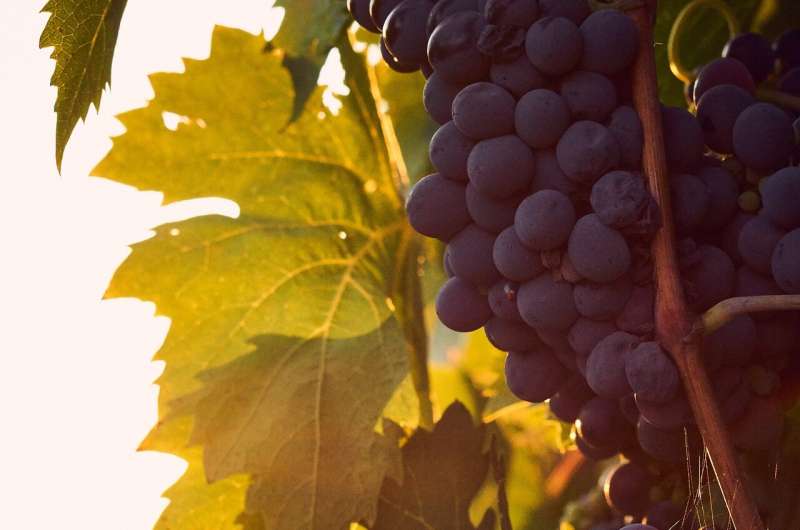This article has been reviewed according to Science X's editorial process and policies. Editors have highlighted the following attributes while ensuring the content's credibility:
fact-checked
trusted source
proofread
'Sour' grapes: Berry damage, fruit flies worsen wine

Damaged grape berries combined with vinegar flies are a recipe for promoting sour rot, a disease that lowers vineyard yields and wine quality, according to a Cornell study reporting on field experiments in New York state.
The study revealed that wasps, birds and wet weather damage the skin on grapes and create openings for vinegar or fruit flies (Drosophila melanogaster) to lay eggs in the grape's exposed flesh. When they do so, the flies may also inadvertently spread yeast and bacteria that interact to cause sour rot, creating favorable conditions for infections.
"Sour rot creates a set of symptoms that lower the quality of wine made from infected grapes," said Greg Loeb, professor of entomology at Cornell AgriTech in the College of Agriculture and Life Sciences and senior author of the study, which was published in the May issue of the American Journal of Enology and Viticulture. Rekha Bhandari, a graduate student in Loeb's lab, is the paper's corresponding author.
In the two-year study, from 2021 to 2022, the researchers tested the effects of different types of berry damage in the presence or absence of adult D. melanogaster on a sour rot-susceptible Vignole cultivar in fields at Cornell AgriTech in Geneva, New York. Berry clusters were inoculated with yeast and sour rot bacteria.
In both years, they found, sour rot was most severe (measured by the percentage of infected berries in a cluster) on mechanically injured clusters—to mimic bird pecks—compared with other treatments. When fruit flies were present, it was worse. They discovered a similar pattern when berries were damaged by yellowjackets, though the presence of fruit flies increased infections only in the second year.
In a third damage treatment, damage by grape berry moth larvae had minimal effect on sour rot severity, except in the presence of D. melanogaster in 2022.
"We'll use this knowledge to help make recommendations to growers about how to try to control this type of cluster rot," Loeb said.
One such recommendation is to use bird netting and selectively apply insecticides to deter insects and limit berry damage in the latter part of the growing season, Loeb said.
Though insecticides are known to work well for fruit flies, they come with costs.
"We now know there is a considerable amount of insecticide resistance developing in fruit flies in New York and around the country," Loeb said. "So that's another part of this. We now understand what the risk factors are and when it makes sense for growers to apply insecticides and other kinds of microbicides."
Growers may apply treatments when extended wet weather creates cracks in berries, for example. Experiments are also underway to develop nets with small mesh to protect the berries from yellowjackets.
"It'd be nice to get to a place where we can develop risk models that growers can use to help them make [treatment] decisions," Loeb said.
More information: Rekha Bhandari et al, Role of Berry Injuries andDrosophilaVinegar Flies in Sour Rot Disease Etiology, American Journal of Enology and Viticulture (2024). DOI: 10.5344/ajev.2024.23065
Provided by Cornell University





















